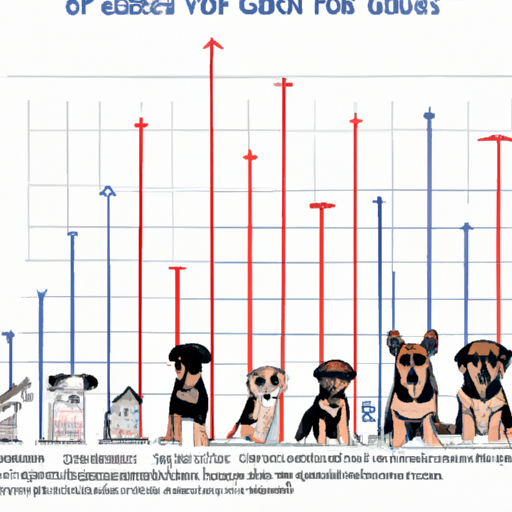As a caregiver to your furry friend, understanding their growth and development is crucial. This comprehensive guide will provide you with all the essential details on “how long do dogs grow.”
1. Understanding Dog Growth
All dogs, irrespective of their breed, undergo a similar growth cycle. However, the time they take to mature varies. Smaller breeds generally mature faster than larger breeds. By the time they are a year old, most dogs stop growing in height, but may continue to fill out in muscle mass and weight.
2. Growth Phases of a Dog
Here’s a detailed look at the growth stages of a dog’s life, which can help you better understand your pet’s development:
2.1. Puppyhood
Puppies are born blind, deaf, and toothless. By the time they are two weeks old, their eyes and ears open. They begin to grow baby teeth around three weeks. This period is also when puppies learn to walk.
2.2. Adolescence
This phase usually starts when a puppy is around six months old and can last until they are two years old. During adolescence, dogs go through rapid growth spurts and hormonal changes, much like human teenagers.
2.3. Adulthood
Adulthood usually begins when a dog is between one to three years old, depending on the breed. During this phase, dogs stop growing in height but may continue to gain weight or muscle mass.
2.4. Senior
Dogs transition into their senior years at different ages, based on their size and breed. Small breeds can be considered senior at around ten years old, while large breeds might reach this stage at six or seven.
3. Breed-Specific Growth
Different dog breeds grow at different rates. Here’s a general breakdown:
| Breed Size | Growth Cessation |
|---|---|
| Small breeds | 6-8 months |
| Medium breeds | 12-15 months |
| Large breeds | 18-24 months |
4. Factors Influencing Dog Growth
Various factors can influence the rate at which your dog grows:
-
Genetics: The breed and genetic makeup significantly impact how fast and how big your dog will get.
-
Nutrition: Proper nutrition is crucial for a dog’s growth and development. A balanced diet will ensure that your dog reaches their full potential.
-
Health: Illness, parasites, and injuries can all affect a dog’s growth.
5. How to Determine If Your Dog Is Growing Normally
Regular veterinary check-ups are essential to ensure your dog is growing at a healthy rate. Keep track of your dog’s weight and size, and discuss any concerns with your vet.
6. How to Support Your Dog’s Growth
As a caregiver, there are several ways you can support your dog’s growth:
-
Provide a balanced diet: Always provide food that’s appropriate for your dog’s age, size, and breed.
-
Regular exercise: Regular physical activity helps promote healthy growth and development.
-
Regular vet check-ups: Regular check-ups will ensure your dog is growing normally and will help identify any potential health issues early.
FAQ
Q1. When do dogs stop growing?
Most dogs stop growing in height by the time they are a year old but may continue to gain weight or muscle mass for several more months.
Q2. Does neutering/spaying affect a dog’s growth?
Neutering or spaying can affect a dog’s growth if done too early, as hormones play a role in closing the growth plates.
Q3. What if my dog is not growing?
If you’re concerned about your dog’s growth, it’s best to consult a vet. They can check for any potential health issues that may be affecting growth.
Understanding your dog’s growth cycle can help you provide the best care possible, ensuring they grow into a healthy and happy adult. Remember, every dog is unique, so it’s essential to pay attention to their individual needs and consult your vet regularly.



